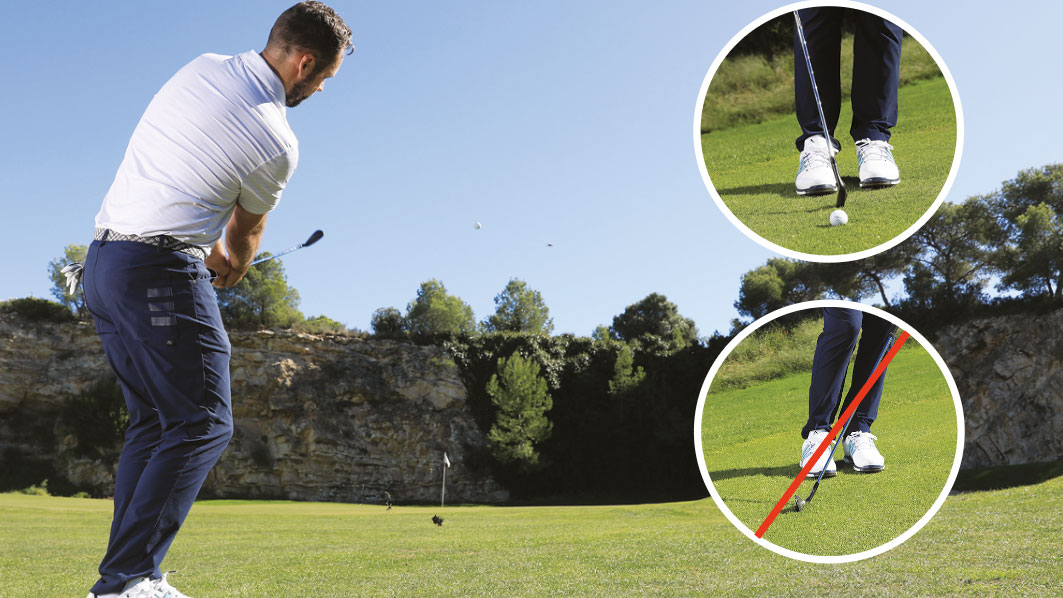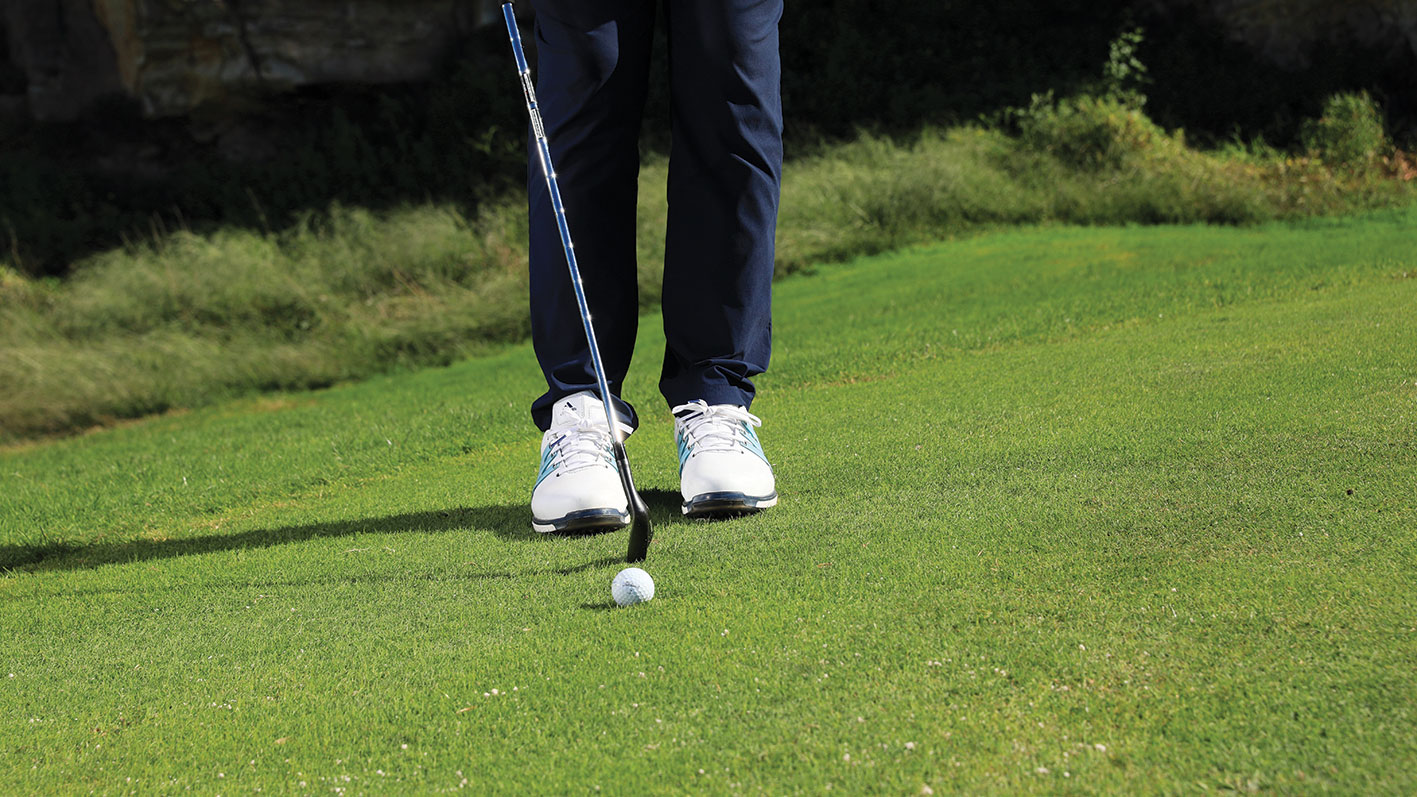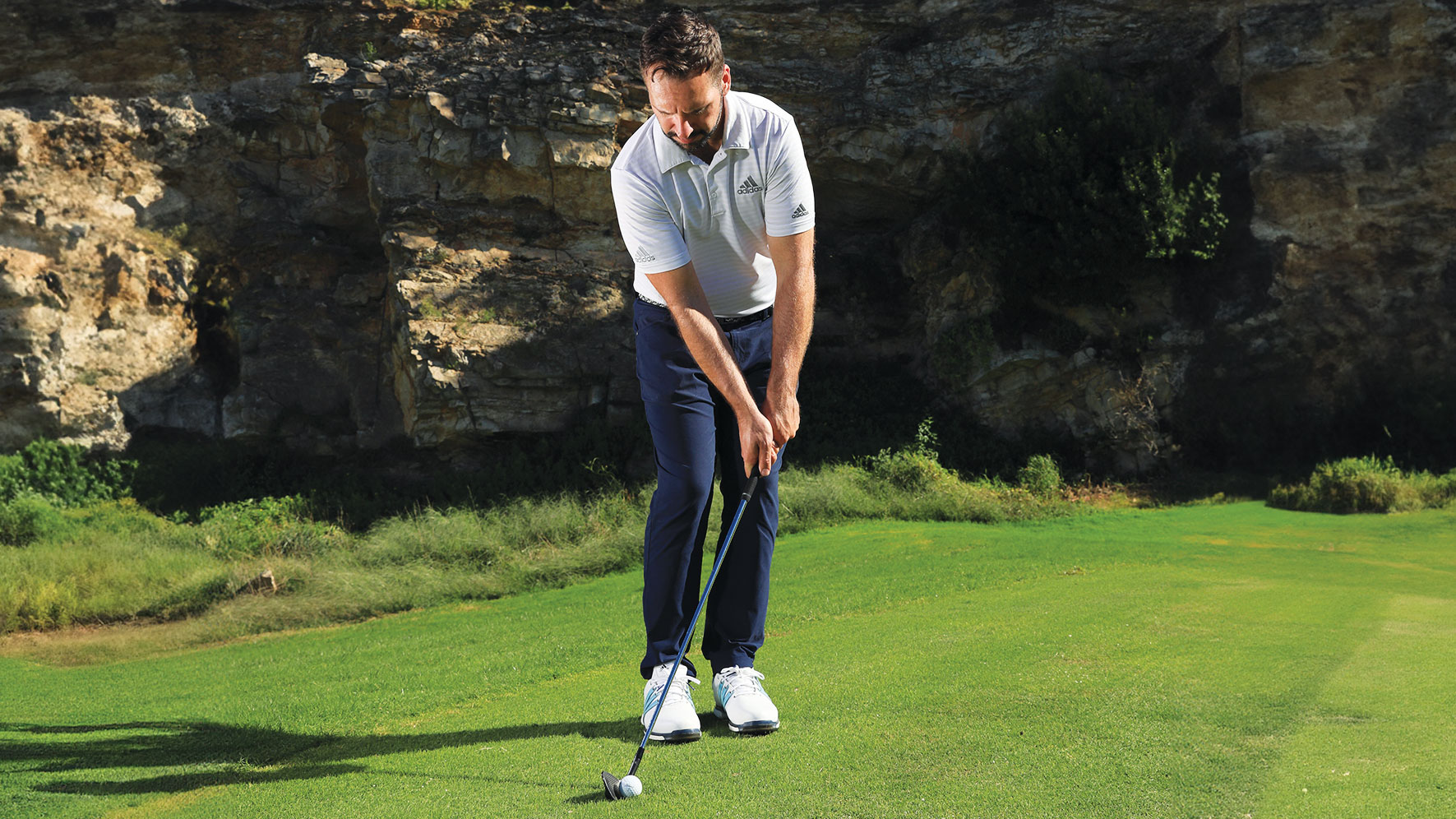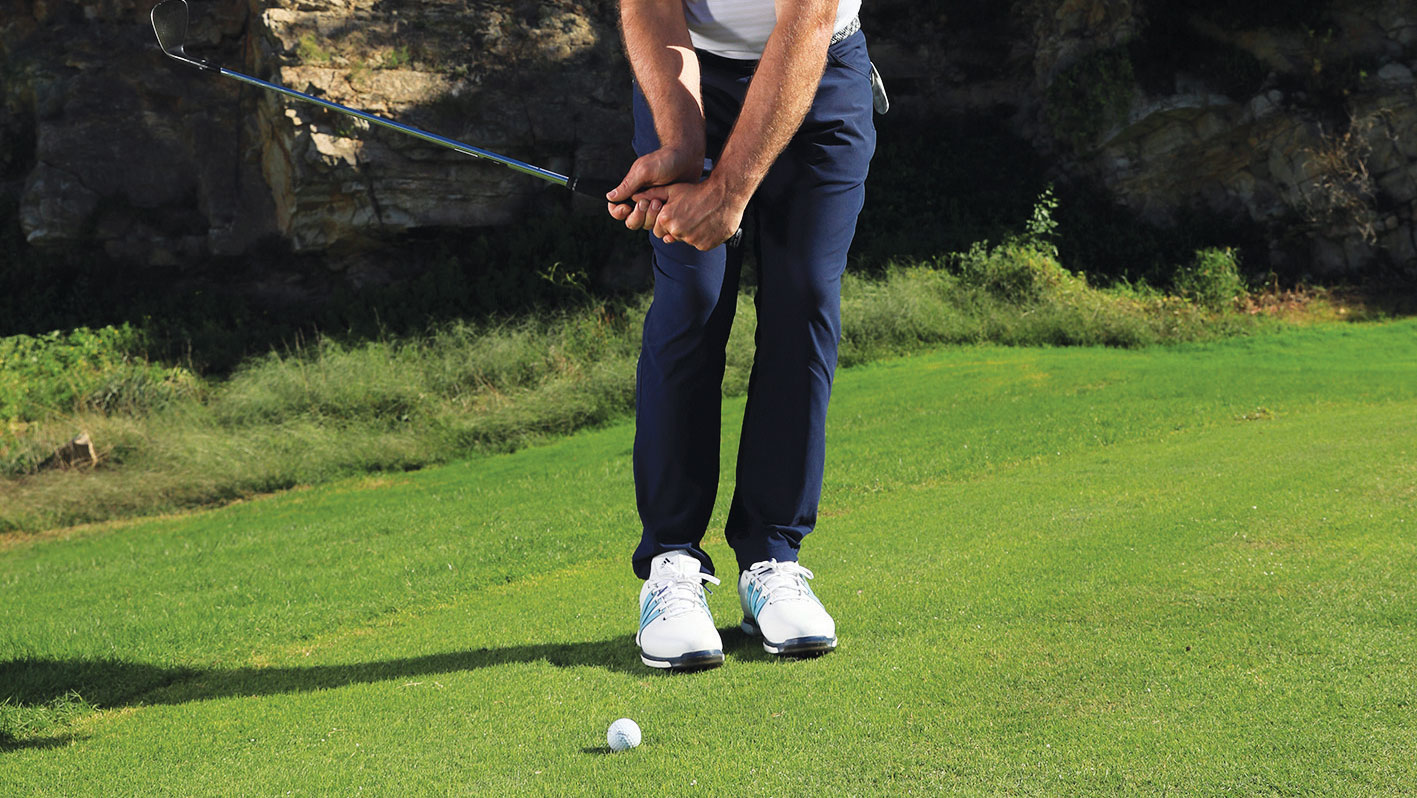
We all play shots from time to time that can leave us in a fit of rage. Whether you're struggling with a slice, going through a spell of the putting yips, or you've got a chronic case of topping of the golf ball, it's important to know that there's always a cure.
One of the most infuriating shots to play, especially given how close we can be to the flag, is a fat chip shot. We can hit a long drive 270 yards, play a half decent approach, and then, because our chipping technique lets us down, take three shots from no more than a dozen or so yards.
The best way to cure fatting the ball - whether it's a chunky 3-wood, wedges from 100 yards, or around the green - is always to listen to the advice offered by our terrific panel of Top 50 Coaches. Here, Peter Finch explains how some simple adjustments around the green will help you to get-up-down with ease.
How To Stop Catching Chips Fat
1. Basic technique
The most common chipping faults result in loss of strike quality, with fats and thins stemming from golfers not understanding how to use bounce properly and control the low point through impact. Often this is because they have their hands too far forward and present the leading edge to the ground.
The best way to chip is to have the ball just inside the back foot, with the shaft pointing just to the left of your belt buckle. Your sternum should be in front of the ball at address, at the top and at impact. This way, you can use your shoulders and arms to move the club through impact.

2. Hitting down too much
If the lie’s not great or you want to keep the trajectory low, getting your hands forward is not bad advice on the face of it - it helps to steepen the angle of attack to deal with a poor lie or keep it low.
The problems arise when the hands push forward and lead the stroke through impact. It’s more about keeping the body and sternum together and allowing the club to brush through. You can still use the bounce even when you’re steepening the angle of attack to keep it low, as long as you don’t allow the hands to get miles ahead of the clubhead through impact. That is when they become disconnected from what the body is doing.

3. Keep the wrists out of it
It’s much better to keep the wrists almost entirely out of it when chipping. Many a problem comes from overuse of the wrists (see picture below), either cocking them on the way back and then having to uncock them through the ball, or flicking at the ball through impact in the mistaken belief you need to help the ball up. You don’t, your wedges have more than enough loft!

4. The crossbar drill
A good way to help your chipping is to imagine a bench or crossbar on the green, and then get a clear idea of what you’re trying to do - hit over, under or through it. To do this, you will need to vary trajectory, and the easiest way is simply to change the club. A lot of people use the same club for all their chips, putting the ball further back in their stance to hit it low. You don’t need to do this as you’ve got countless other clubs at your disposal.
FAQs
Q: What does early release mean when chipping?
A: Lots of golfers are guilty of an early release. This is where the club bottoms way before the ball, which leads to a succession of thins and duffs (fats/heavy strikes).
Q: What is a chip-and-run?
A: This is where you would typically take a club with less loft, like a 7- or 8-iron. In terms of technique, you'd typically grip the club as you would a putter and take a similar stance. Stand up taller with the hands a little higher and make a putt-like stroke, making a smooth, rocking motion with your shoulders. The aim of the chip-and-run is to minimise spin on the ball.
Q: How wide should my feet be when chipping?
A: You don’t want too wide a stance - the feet should be approximately one clubhead apart. You might have some joy if you 'flare' the lead foot slightly, too, as this will help you to get your weight running through your lead side.







